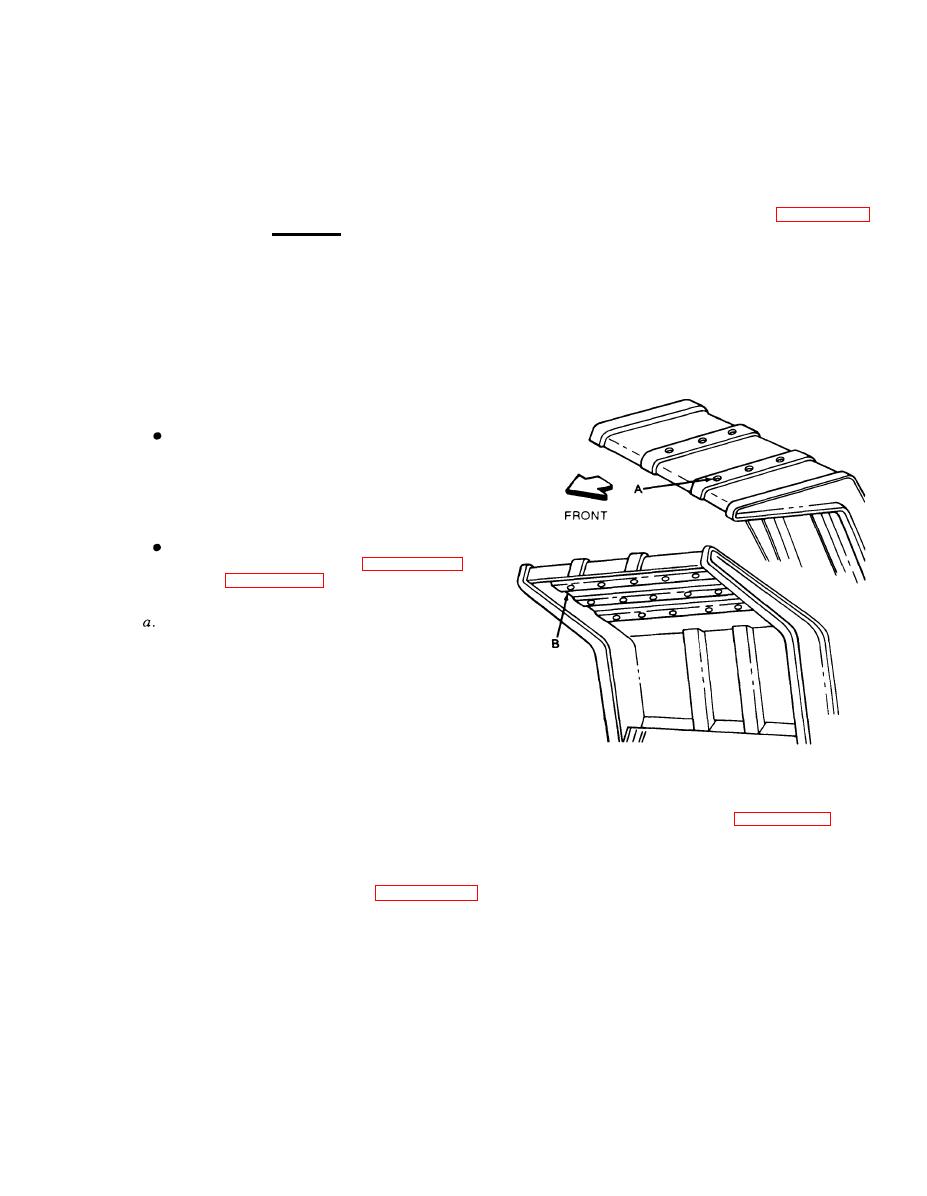
TB 43-0213
Section Ill. RUSTPROOFING PROCEDURES
including open access surfaces to side, cross, and
14-4. Rustproofing Procedures.
longitudinal-sills.
d. Rustproofing Cab Protector (see Figure 14-13).
CAUTION
(1) Insert 90 degree short tool in holes A and
Do not spray any portion of moving compo-
spray in all directions.
nents, transmission, transfer case, cylin-
(2) Insert 90 degree short tool in holes B of cab
ders, pumps, valves, prop shaft, exhaust
protector cross reinforcements and spray in all direc-
system, rubber bump stops, brake-drums,
tions.
brake backing plates, parking brake linkage,
shaft linkage, tires, electrical components,
(3) Plug holes A (U.S. Marine Corps vehicles
engine linkages, or air intake systems, Cov-
only).
er all areas with paper where necessary.
NOTE
There are areas where a 10 mil wet film
thickness cannot be obtained without
wasting a large amount of compound. In
those areas, complete coverage of the
surface area is necessary at whatever
thickness is obtainable.
For rustproofing procedures of specific
dump body items, refer to Figure 14-12
through Figure 14-17.
Dry Film Thickness Requirements. A five rnil drv
film thickness is required for adequate rustproofing
protection. A 10 mil wet film thickness is required to
obtain a minimum five mil dry film thickness. If
needed, the vehicle can be resprayed to reach this
thickness,
b. Spraying Pressure, The rustproofing compound
should be applied to sheet metal and structural
members in even coats. Spraying pressure should be as
TA504897
low as possible while maintaining an even spray pattern.
Figure 14-13. Rustproofing Cab Protector.
An acceptable starting point is 40 psi (276 kPa), but
adjustments may have to be made due to temperature
e. Rustproofing Tailgate (see Figure 14-14).
changes and differences in rustproofing compound.
Using too much pressure will waste compound by
(1) Insert 90 degree short tool into holes A of
causing overspray and excessively thick coatings.
vertical tailgate, holes B of tailgate hinge rod channel,
holes C of center horizontal stiffener, and holes D of
c, Rustproofing Underbody (see Figure 14-12).
upper horizontal stiffener. Spray in all directions.
Insert short rigid tool into tailgate underbody holes A.
Completely cover the underbody of dump vehicle,
(2) plug holes A, B, and C.
14-7

